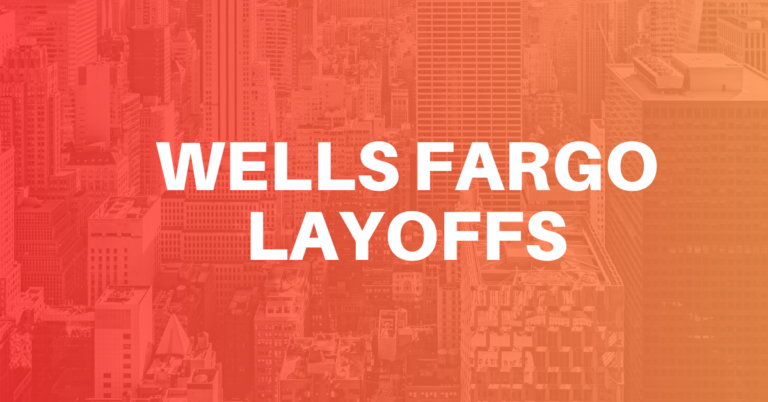In the intricate dance of global finance, every move made by major players like Wells Fargo sends ripples through the industry. The recent announcement of Wells Fargo Layoffs by this financial giant has sparked intense scrutiny and speculation, revealing a complex tapestry of strategic decisions, regulatory challenges, and economic realities. Let’s delve into the depths of this story to understand its implications and the broader landscape it reflects.
The Unveiling of Layoffs
Wells Fargo’s journey into the realm of layoffs began to unravel in late 2023 when CEO Charlie Scharf unveiled plans to trim the company’s workforce. This strategic decision was not an isolated event but rather part of a larger restructuring effort aimed at recalibrating the bank’s operations in response to a shifting economic landscape. The magnitude of this move is significant, with the company anticipating severance costs ranging from $750 million to $1 billion during the fiscal fourth quarter of the previous year.
Strategic Imperatives and Economic Realities
At the heart of this decision lies a confluence of strategic imperatives and economic realities. Scharf’s leadership has been focused on steering Wells Fargo through turbulent waters, marked by challenges ranging from regulatory constraints to shifting market dynamics. The layoffs represent a calculated step towards aligning the company’s workforce with its operational needs, particularly in light of persistently low turnover rates.
However, it’s crucial to note that Wells Fargo’s journey has not been devoid of regulatory hurdles. The bank is operating under an asset cap imposed by regulators, a consequence of issues stemming from a previous fake accounts scandal. This cap has restrained Wells Fargo’s growth potential, casting a shadow over its ability to navigate challenges and capitalize on opportunities in the market.
Financial Performance Amidst Uncertainty
Amidst these challenges, Wells Fargo’s financial performance has been a subject of keen interest. The fourth-quarter profit surpassed expectations, driven in part by cost-cutting measures that included the announced layoffs. However, the bank also issued cautionary notes about potential headwinds, with a projected 7% to 9% reduction in net interest income for 2024. This projection contributed to a 1.9% decline in its shares, signaling investor concerns about the road ahead.
CEO’s Vision and Industry Trends
Charlie Scharf, in his capacity as CEO, has expressed confidence in the strategic direction pursued by Wells Fargo. His vision is anchored in driving stronger returns over time, a goal that necessitates difficult decisions such as layoffs in the short term. Importantly, Wells Fargo’s actions are not occurring in isolation but reflect broader trends within the financial sector.
Reports indicate that other banking institutions, including Morgan Stanley, are also contemplating job cuts due to higher-than-expected employee retention rates. This trend underscores a fundamental shift in how banks are approaching workforce management, driven by factors such as increased inflation, high-interest rates, and evolving market dynamics.
Navigating Uncertainties and Challenges
Looking ahead, Wells Fargo faces a landscape fraught with uncertainties and challenges. The increased provisions totaling $1.28 billion to prepare for potential loan defaults signal a cautious approach amidst economic volatility. Concerns about office loans loom large, fueled by the rise in remote and hybrid work models that have led to increased vacancies and challenges for building owners in meeting their financial obligations.
The bank’s observation of higher net loan charge-offs for commercial real estate office and credit card loans in the fourth quarter underscores the complexities of its portfolio management in a rapidly evolving environment. These challenges necessitate a blend of strategic foresight, operational agility, and risk management acumen to navigate successfully.
Conclusion: A Dynamic Landscape of Change
In conclusion, Wells Fargo layoffs are not just a singular event but a reflection of broader shifts within the financial sector and the global economy. The interplay of strategic imperatives, regulatory constraints, and economic realities underscores the complexities faced by major financial institutions in charting their course forward.
As Wells Fargo Layoffs navigates these currents, the spotlight remains on its ability to adapt, innovate, and drive sustainable growth amidst uncertainty. The CEO’s vision, industry trends, and ongoing regulatory dynamics will continue to shape the narrative, making this a story worth following for investors, analysts, and stakeholders alike.
Also Read: Taylor Swift and Travis Kelce: A Love Story in the Limelight

